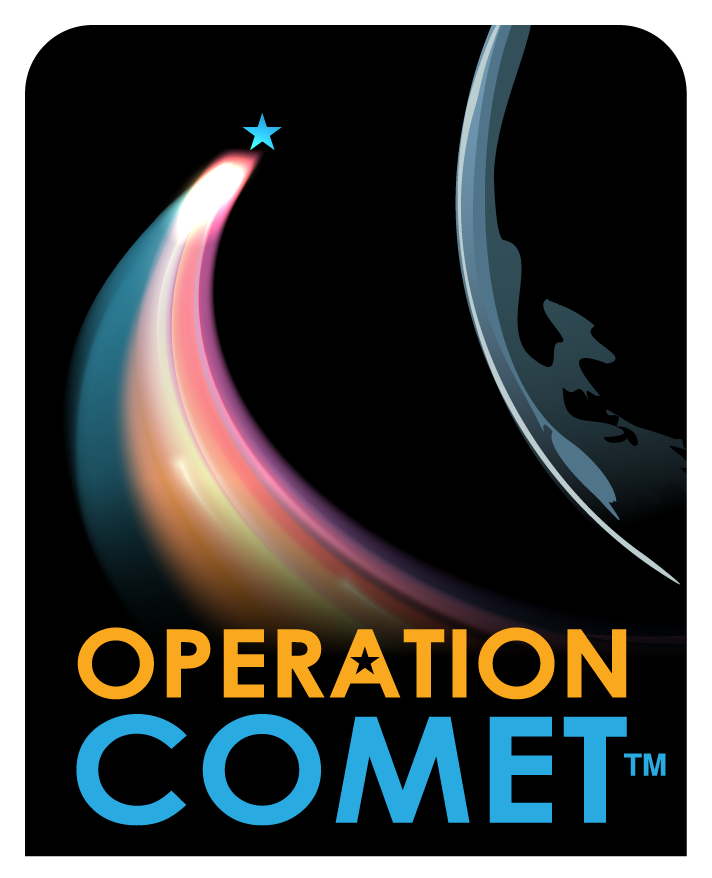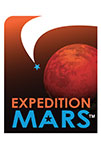
School Programs

Astrotot Program
This fun, hands-on program is ideal for pre-kindergarten through second grade classes. Each 1.5 hour program is offered to any preschool, day care center, or large group. See options and pricing listed below.
Astrotots will learn about rocket basics, see a "live" launch in our transporter and
do a
hands-on project.
$100, up to 15 children (2 adults required)
$150, 16-28 children (3 adults required)
Astrotots will learn about stars and constellations in our star dome, go on a star
hunt in our mission control room an do a hands-on project.
$100, up to 15 children (2 adults required)
$150, 16-28 children (3 adults required)
Give us a call at (270) 534-3101 to book this program. If you would like an informational flyer about this program, send us an email at sarahj.davis@kctcs.edu
School Missions
Train for your mission...then blast into space! A visit to the Challenger Learning Center is not just a field trip. Our school mission programs are based around a comprehensive curriculum, which is aligned with the Next Generation Science Standards and Kentucky Core Academic Standards. Missions and activities also include 21st century skills such as problem solving, communication, decision making and creative thinking.
School mission programs include:
- Teacher professional development opportunities
- Curriculum with up to four weeks of pre- and post-visit activities
- Two-hour extended classroom activities on mission day
- Two-hour simulated space mission at the Challenger Learning Center
Cost: $500 per mission (max 30 students)
Our curriculum is now available through Google Drive. To receive the login credentials, please contact Jennifer Reed at (270) 534-3098 or jennifer.reed@kctcs.edu.
 Scientists have discovered that a large comet is passing close to Earth soon. It is
the perfect opportunity to study and explore long-period comets. The crew is tasked
with a mission to observe, research, and analyze the long-period comet that has entered
our solar system. Astronauts in both Mission Control and Space Station will conduct
experiments to study the comet to help scientists better understand how they are formed
and how they could potentially impact Earth. During the mission, however, goals quickly
change when an urgent discovery is made, and the crew must brainstorm and problem-solve
a solution ensuring the safety of the crew and the success of the mission. This scenario
is for 4th or 5th grade students.
Scientists have discovered that a large comet is passing close to Earth soon. It is
the perfect opportunity to study and explore long-period comets. The crew is tasked
with a mission to observe, research, and analyze the long-period comet that has entered
our solar system. Astronauts in both Mission Control and Space Station will conduct
experiments to study the comet to help scientists better understand how they are formed
and how they could potentially impact Earth. During the mission, however, goals quickly
change when an urgent discovery is made, and the crew must brainstorm and problem-solve
a solution ensuring the safety of the crew and the success of the mission. This scenario
is for 4th or 5th grade students.
 As a team of astronauts, your students must board a Spacecraft and launch to the Moon
in search of a long-term habitat. Another team of scientists and engineers are stationed
in Mission Control on Earth to command and assist the astronauts on this mission.
Once the Spacecraft crew successfully lands on the Moon, they must deploy a Lunar
Exploration Rover to identify a suitable location for a sustainable long-term human
habitat. However, when the crew receives troubling readings from below the Moon’s
surface, the two teams must work together and make critical decisions to turn a potential
catastrophe into NASA’s finest hour. This scenario is for 6th grade students.
As a team of astronauts, your students must board a Spacecraft and launch to the Moon
in search of a long-term habitat. Another team of scientists and engineers are stationed
in Mission Control on Earth to command and assist the astronauts on this mission.
Once the Spacecraft crew successfully lands on the Moon, they must deploy a Lunar
Exploration Rover to identify a suitable location for a sustainable long-term human
habitat. However, when the crew receives troubling readings from below the Moon’s
surface, the two teams must work together and make critical decisions to turn a potential
catastrophe into NASA’s finest hour. This scenario is for 6th grade students.
 The year is 2076. A handful of facilities have been established on Mars: a greenhouse,
The year is 2076. A handful of facilities have been established on Mars: a greenhouse,
a mobile geological survey base, and a centralized research habitat. The primary
human habitat is not on Mars, but on one of its moons, Phobos. A Spacecraft
regularly ferries astronauts and scientists between the base on Phobos and the
surface of Mars. The Spacecraft also carries parts to build a remotely operated
vehicle (ROV) to continue the search for evidence of life and water. However, when
crew members discover an imminent threat to their Spacecraft and the Martian
surface facilities, they must act quickly to save their stations, their research,
and
their Spacecraft. This scenario is for 7th - 12th grade students and adults.
- Suggested for 6th grade
- Can be done at school or individual homes
- Apple products are not compatible
- Each student needs a computer
- 1 hour in length
- Pre-curriculum provided
- Virtual teacher training provided
- School must print data logs
Cost: $250 (max 30 students)
Overview: Your students will launch the New Glenn rocket and deploy the Blue Moon
lunar lander on a cargo mission to the Moon. Students work in teams to monitor the
engines and the structure of the rocket and lander. They will also monitor and adjust
trajectory based on data about space weather and debris. Students will then choose
an optimal Moon landing site. This mission uses exclusive animations and imagery
from Blue Origin- a privately owned aerospace company.
Although we highly recommend you follow the age suggestions, we will facilitate whatever
options you choose!
To schedule your virtual mission, call (270) 534-3101 or send an email to sarahj.davis@kctcs.edu.
Professional development for educators is a vital component of the Challenger Learning Center program. We believe the more students and teachers are prepared for their mission, the better the student learning experience. Each summer a variety of workshops is offered to educators. The new teacher workshop is designed for educators who have never brought a group to the CLC, this will include participating in a mission and learning about the logistics of bringing the students to the center. Returning teacher workshops change each summer and always include ways to enhance the Challenger Learning Center curriculum with new STEM ideas and activities. Summer professional development dates and topics will be available each spring.
To book an on-site mission, complete our Program Inquiry Form. You may also give us a call at (270) 534-3101 or email sarahj.davis@kctcs.edu.
To book a virtual mission, please give us a call at (270) 534-3101 or email sarahj.davis@kctcs.edu.
Starlab - Portable Planetarium
Bring the wonders of the night sky to your school!
All STARLAB programs meet current Next Generation Science Standards (NGSS). Click an option below to review specific NGSS details.
Journey Through the Stars
Number of participants: 12-28
Time in STARLAB: 45 minutes
Age: 2nd grade & up
Fee: $100/session
Take a tour through our night sky! Explore the stars in their constellations and hear the Greek and Roman Mythology stories related to them.
ADD-ON Correlating Activity; $50
(extends session additional 30 minutes)
Next Generation Science Standards
5-ESS1-1: Support an argument that differences in the apparent brightness of the sun compared to other stars is due to their relative distances from Earth. (5th grade standard)
6-ESS1-3: Analyze and interpret data to determine scale properties of objects in the solar system. (6th grade standard)
6-ESS1-2. Develop and use a model to describe the role of gravity in the motions within galaxies and the solar system.
Marvelous Moon
Number of participants: 12-28
Time in STARLAB: 45 minutes
Age: 2nd grade & up
Fee: $100/session
Explore our Moon! See and learn about the moon’s phases, features and the landing sites where humans walked.
Next Generation Science Standards
6-ESS1-1: Develop and use a model of the Earth-sun-moon system to describe the cyclic patterns of lunar phases, eclipses of the sun and moon, and seasons. (6th grade standard)
Solar System Safari
Number of participants: 12-28
Time in STARLAB: 45 minutes
Age: 2nd grade & up
Fee: $100/session
In just seconds, travel millions of miles through space! Learn about the planets, their moons and more as you take a safari through our solar system.
Next Generation Science Standards
6-ESS1-3: Analyze and interpret data to determine scale properties of objects in the solar system. (6th grade standard)
6-ESS1-2. Develop and use a model to describe the role of gravity in the motions within galaxies and the solar system.
Here Comes the Sun
Number of participants: 12-28
Time in STARLAB: 30 minutes
Age: Kindergarten - 1st grade
Why isn’t the Sun always in the same place? Travel with us as we track the superstar of our sky throughout the year. This option includes a 15 minute activity; total program time is 45 minutes.
Next Generation Science Standards
K-PS3-1. Make observations to determine the effect of sunlight on Earth’s surface.
1-ESS1-1. Use observations of the sun, moon, and stars to describe patterns that can be predicted.
1-ESS1-2. Make observations at different times of year to relate the amount of daylight to the time of year
60 miles or less: $50 per day; 61 miles or more, call (270) 534-3101 for pricing.
- Minimum of 2 sessions required to book, combo of options 1-4 is allowed.
- We are able to facilitate up to 5 sessions in a school day.
- One school personnel must remain with students at all times.
- Large QUIET area that can accommodate a dome of 11 ft. high and 25 ft. across.
- The floor must be clean before the dome can be set up.
- There must be electrical outlets available-one for the fan and one for the projector.
Complete our Program Inquiry Form. You may also give us a call at (270) 534-3101 or send us a email at sarahj.davis@kctcs.edu.
